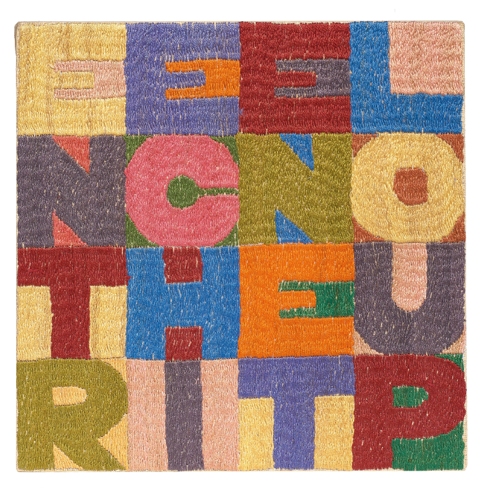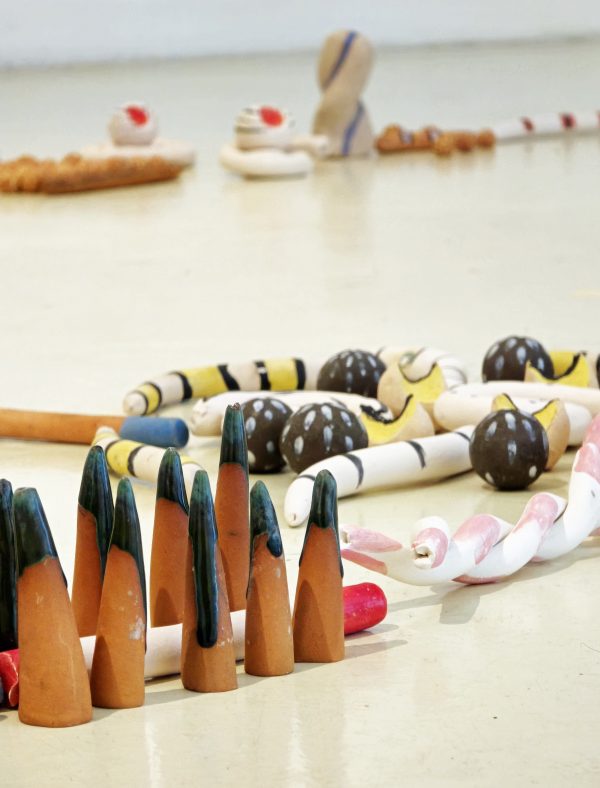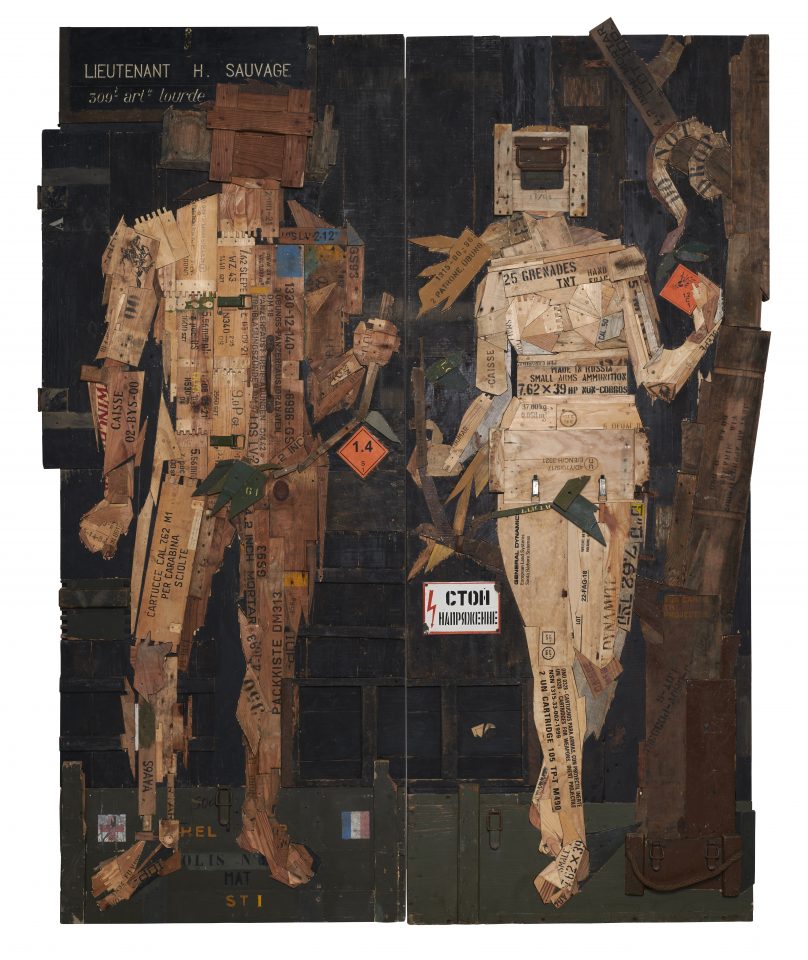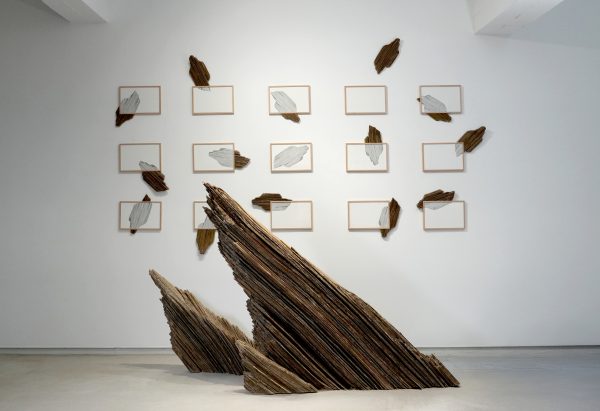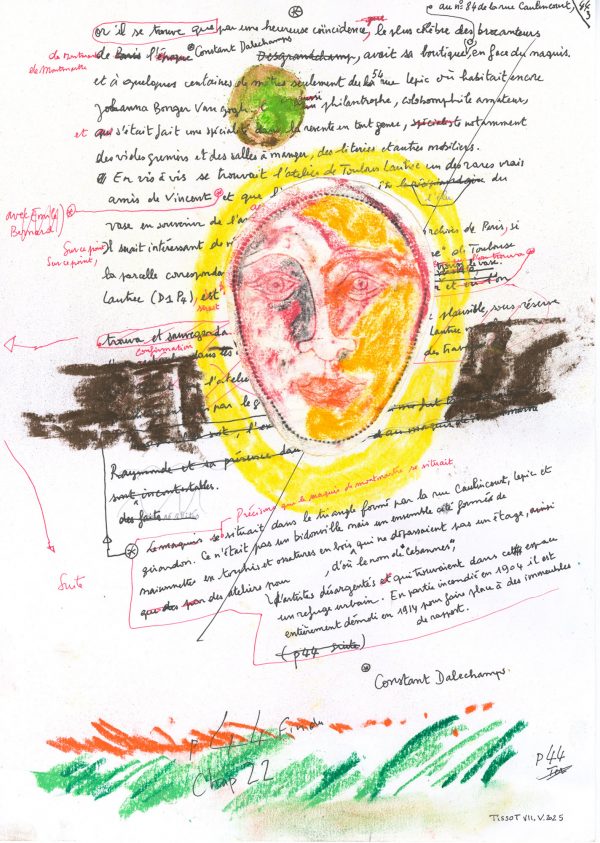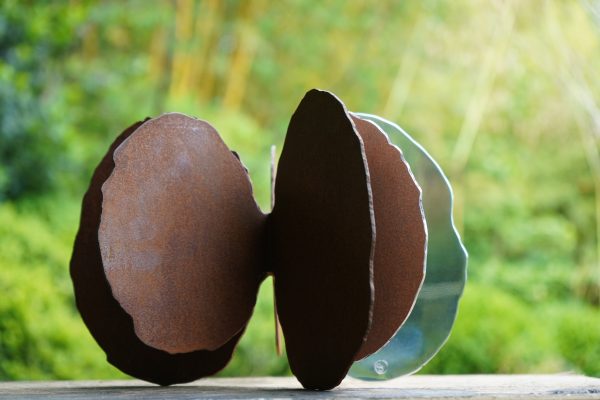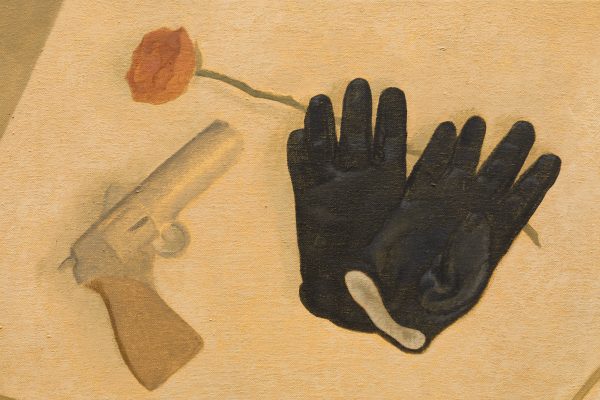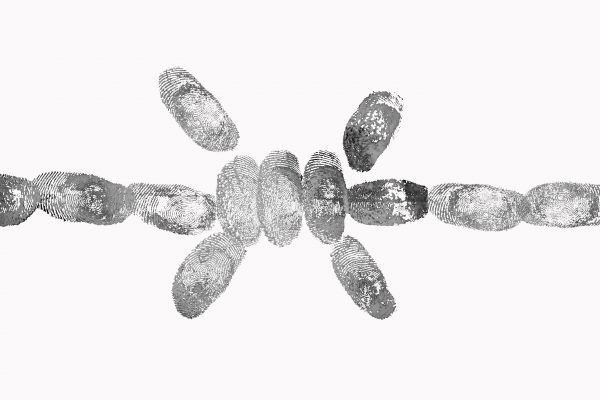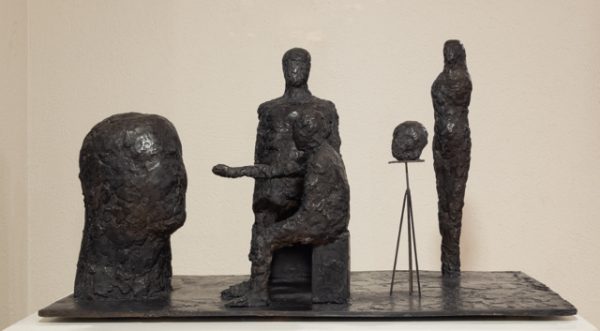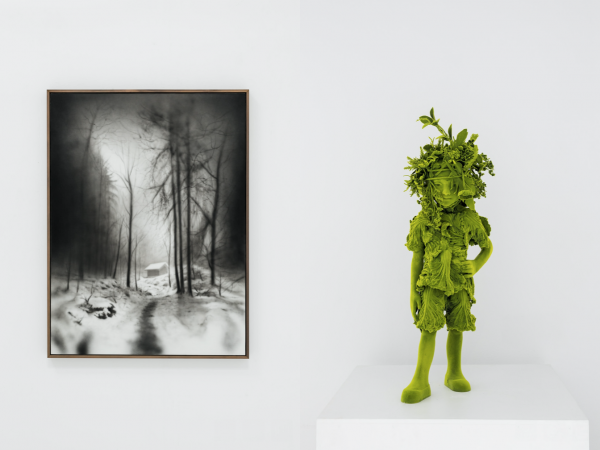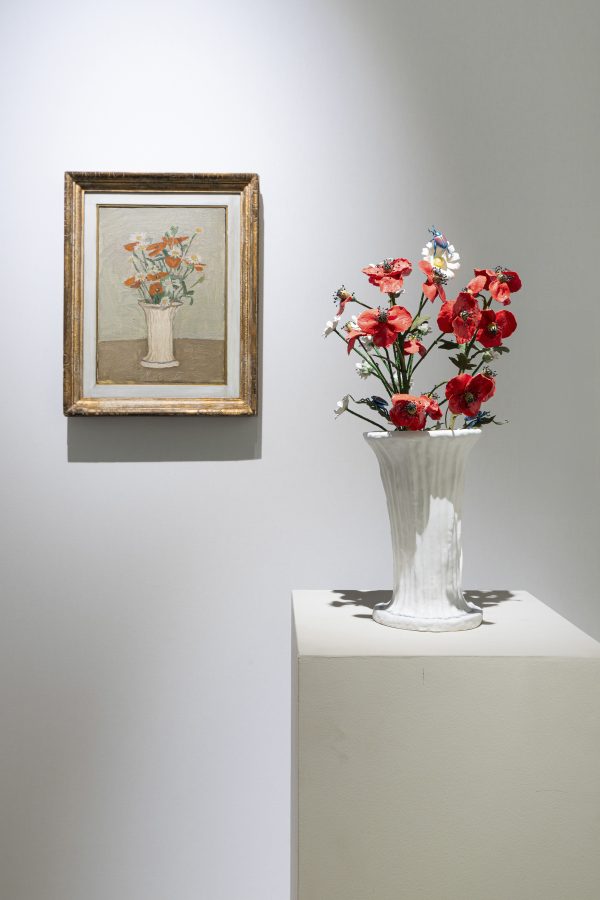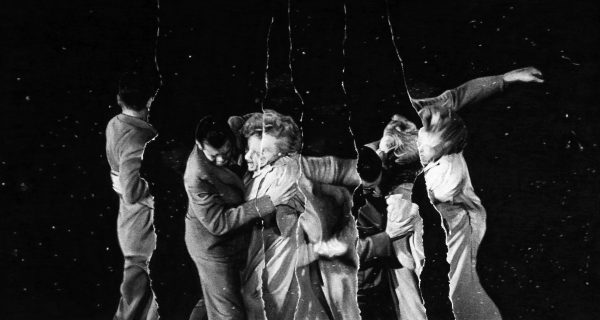RABOUAN MOUSSION
Dimitri Tsykalov , Rusia
"ELEMENTS"
Adam et Eve, 2020-2021, bois, caisses de munitions, diptyque : 242 x 99 x 12 cm / 244 x 100 x 10,5 cm.
Dimitri Tsykalov has long affectionately referred to his studio as “the bunker”. So it’s hardly surprising that this casemate – both shelter and outpost – should be the setting for this exhibition, with pieces that all have something to do with violence and war. Not that their subject is warmongering or military strategy. More subtly, with his sculptures and drawings, Tsykalov expresses art through the means of what materially makes war possible, at the most basic level: ammunition containers.
This is not in the least an “art of war”, but a stunning way of making art triumph through the means and tools of what a priori seems furthest from it: war. To the shadow cast by war over culture, the artist opposes the shadow cast by culture over war. In a striking paradox, Tsykalov creates with what destroys. All the pieces in ELEMENTS are built from the dismemberment, cutting up and rearrangement of those boxes without which war simply could not take place.
With ELEMENTS, art has taken up arms. And we’re now forced to realize that the words “art” and “artillery” have something in common.
A monumental work of art dominates the exhibition: “Temple”. The piece may suggest the shape of the Empire State Building. Here, it’s the signifier “empire” that’s important to remember. “Empire State Building” can be translated as “Empire State Construction”. How does an empire build itself up, if not through weapons and the violence it inflicts on those it subjugates? With its two legs resting on the ground in front of it, “Temple” also evokes the Sphynx of Giza. The piece seems to carry an enigma that would ask every visitor to the exhibition the question of the origin of hatred and violence – a question destined to remain eternally unanswered. As they might be in an arsenal, the empty ammunition boxes that make up “Temple” are stacked whole, while the other pieces are made of cut-up pieces. Thus, even more obviously composed than the other works, “Temple” provides the key to reading the exhibition as a whole, in the sense that it brutally designates its main subject.
Matter is Dimitri Tsykalov’s primary object, his obsession. His sculptural work to date has been divided into four phases, each organized around a different material: wood (with WOODLAND, a ramshackle, second-degree evocation of the high-tech world, with a material evocative of birch wood, a central figure in Russian literary culture), fruit and vegetables (with SKULLS, which explores their capacity to fade, lose their shape and become damaged), meat (with MEAT, weapons are identically reconstituted from meat), to arrive at the current period, centered around the ammunition box, the subject of a series of still lifes.
Solo show of Dimitri Tsykalov
From March 15th to May 31st, 2025
The gallery
In 1989, Jacqueline Rabouan Moussion opened a gallery rue Vieille du Temple in Paris and showed artists like Hervé Télémaque, Jean Degottex, Valie Export, Otto Muehl, Sandy Skoglund and Oleg Kulik. In 2015, the gallery inaugurates a new space rue Pastourelle with a solo show of Erwin Olaf « Waiting ».
Since its creation, the gallery favors an exploratory approach towards emerging scenes drawing its energy between subculture and political commitment. Thus, artists represented from their beginnings and today recognized by institutions (Hervé Télémaque, Erwin Olaf, Oleg Kulik) meet the creations of young talents and established artists.
Gallery artists
Ghyslain Bertholon, Florence Cantié-Kramer, Kirill Chelushkin, Guillaume Durrieu, Vincent Fournier, Claude Gassian, Louis Jammes, JonOne, Oleg Kulik, Quentin Lefranc, Erwin Olaf, Jonathan Potana, Jay Ramier, Denis Rouvre, Val Smets, Hervé Télémaque, Dimitri Tsykalov, Stephan Vanfleteren, Romain Vayson de Pradenne, Xavier Zimmermann
